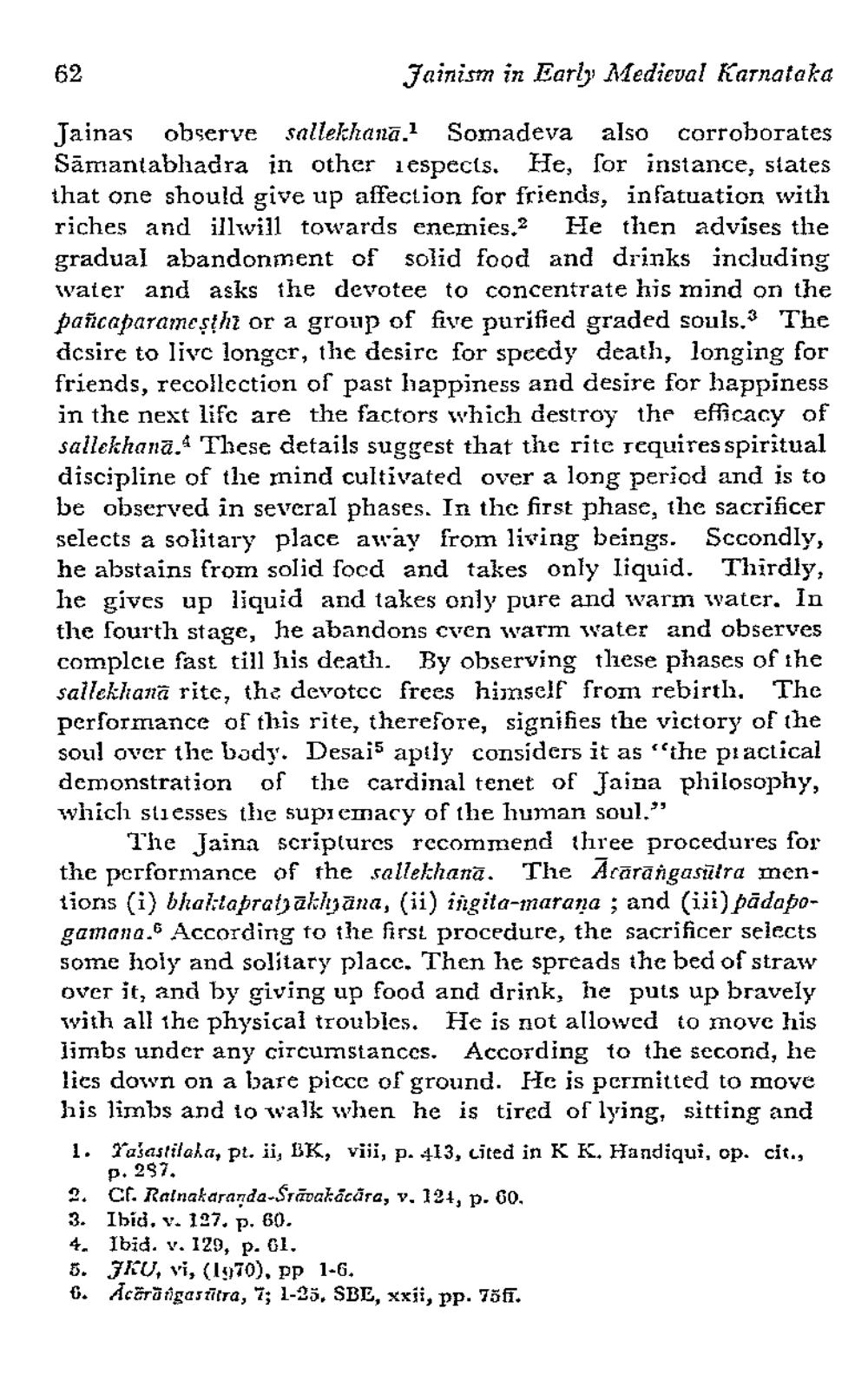________________
62
Jainism in Early Medieval Karnataka
Jainas observe sallekhana. Somadeva also corroborates Sāmantabhadra in other iespects. He, for instance, siates that one should give up affection for friends, infatuation with riches and illwill towards enemies. He then advises the gradual abandonment of solid food and drinks including water and asks the devotee to concentrate his mind on the pañcaparameșthz or a group of five purified graded souls.3 The desire to live longer, the desire for speedy death, longing for friends, recollection of past happiness and desire for happiness in the next life are the factors which destroy the efficacy of sallekhana. These details suggest that the rite requires spiritual discipline of the mind cultivated over a long period and is to be observed in several phases. In the first phase, the sacrificer selects a solitary place away from living beings. Sccondly, he abstains from solid food and takes only liquid. Thirdly, he gives up liquid and takes only pure and warm water. In the fourth stage, he abandons cven warm water and observes complete fast till his death. By observing these phases of ihe sailekhana rite, the devotcc frees hijnself from rebirth, The performance of this rite, therefore, signifies the victory of the soul over the body. Desais aptly considers it as "the practical demonstration of the cardinal tenet of Jaina philosophy, which stiesses the supremacy of the human soul."
The Jaina scriptures recommend three procedures for the performance of the sallekhanā. The Acarangasitra nentions (i) bhallapratyakhyana, (ii) ingita-marana ; and (ii) pādapogamana. According to the first procedure, the sacrificer selects some holy and solitary place. Then he spreads the bed of straw over it, and by giving up food and drink, he puts up bravely with all the physical troubles. He is not allowed to move his limbs under any circumstances. According to the second, he lics down on a bare picce of ground. He is permitted to move his limbs and to walk when he is tired of lying, sitting and 1. Fašastilaka, pt. ii, BK, viji, p. 413, cited in K K. Handiqui, op. cit.,
p. 297. 2. Cf. Ralnakaranda-Srpakācāra, v. 124, p. 60.
Ibid, v. 127. p. 60. 4. Ibid. v. 129, p. 61. 5. JKU, vi, (1970), pp 1-6. 6. dcörünigastītra, 7; 1-25, SBE, xxii, pp. 75fi.




